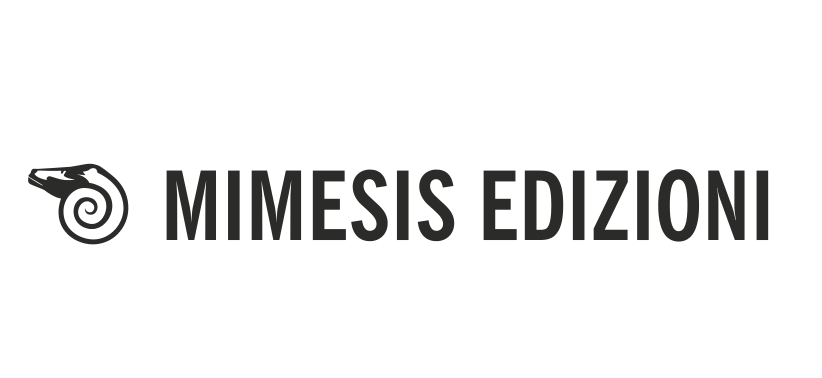Call for Essays
English version
Marcel Duchamp, L.H.O.O.Q, 1919
VCS – Visual Culture Studies
Call for Essays
#11
"Contemporary Duchamp”
edited by Federico Vercellone, Luisa Sampugnaro and Danilo Eccher
Marcel Duchamp is now considered one of the most important artists of the 20th century worldwide. His influence continues to stimulate a variety of spheres of artistic production as well as critical and philosophical research, extending far beyond the confines of the art world. This impressive vitality inspires VCS #11, an issue dedicated to the theme of “Contemporary Duchamp”. The unequivocal starting point is that the conceptual density and artistic significance of Duchamp's discourse, gestures and poetics are far from having exhausted their potential. If something like a Duchampian legacy lives on in our era, it resides above all in the fact that the key elements of that experience relaunch, in the heart of the 2000s, the perennial “telluric” vocation of art: to open up gaps in practice and points of friction in the dominant cultural scheme; to force the imagination; subverting the perception of time, space and objects; questioning the status of institutions and eliciting their hidden mechanisms; interrogating the operational perimeter of the work/production/artwork triad; questioning the hinging of art in the sphere of symbolic autonomy and compensation. Now, this vast problematic field that Duchamp has opened up is destined to take shape in new discursive forms and dimensions if we consider it in the light of the refraction between the world of contemporary art and the main challenges facing the 21st century: the ecological crisis and the posthuman; the increasingly absorbing expansion of the Technosphere; the link between sensory overexposure and anaesthetization dynamics (Senaldi 2019); the capitalism-acceleration paradigm (Rosa 2015; Haladyn 2023); the advance of populism, the consumption of images and its reverberation on the collective unconscious; the temptation of the inorganic that fuels the increasingly insistent reappearance of the nuclear spectre.
Considering these broad premises, VCS #11 aims to question the contemporary nature of our relationship with Marcel Duchamp from a wide range of methodological and disciplinary approaches. The aim is to construct a multidimensional screen in which philosophers, image theorists, critics and curators, art historians and artists can propose approaches that challenge the established narratives of Duchamp's work and re-semanticise its influence in relation to current and future developments in art and material culture, within the current framework of globalized capitalism (Haladyn 2022). This also necessitates a reconsideration of the political dimension inherent in Duchamp's work, as well as the device that informs his art (Echaurren 2019). In a text that remains crucial, Hayles (1999) described the epochal process by which the conception of the individual in the humanistic-liberal tradition has slowly given way to that of a posthuman subject, which is determined in complete symbiosis with the digital. This process is not neutral and has resulted in the great illusion that information can be separated from matter in many fields of knowledge and life. Duchamp's work, just like the digital paradigm in which we are immersed, also focuses on a series of key notions that are crucially relevant to aesthetics and the world of contemporary arts: simulacrum, archive, repetition, incorporation and medium (Galati 2017). The paradigm emerging from the living integration between humanity and generative artificial intelligence echoes Duchamp's yearning to imagine humans as machines. This opens a panorama of challenges and critical issues for reflection that certainly must do – among other things – with a radical rethinking of the values that have shaped modernity.
Below is a non-exhaustive list of possible topics for further exploration:
- Acceleration and ready-made
- Duchamp and contemporary aesthetics
- Duchamp the politician
- Duchamp and the posthuman
- Duchamp and the archive/digital/AI
- New forms of the creative process and dynamics of subjectivation
- Thinking about the ecological crisis with Duchamp
- Duchamp and globalized capitalism
Bibliographical references
Senaldi, M., Duchamp. La scienza dell’arte, Meltemi 2019.
Rosa, H., Accelerazione e alienazione. Per una teoria critica del tempo nella tarda modernità, Einaudi 2015.
Echaurren, P., Duchamp politique, Postmedia 2019.
Galati, G., Duchamp meets Turing, Postmedia 2017.
Haladyn, J. J., Duchamp Accelerated: Contemporary Perspectives, Bloomsbury 2023.
Haladyn, J. J., Duchamp, Aesthetics and Capitalism, Routledge 2022.
Hayles, N. K., How We Became Posthuman: Virtual Bodies in Cybernetics, Literature, and Informatics, University of Chicago Press 1999.
Marcadé, B., Marcel Duchamp. La vita a credito, nuova ed. ampliata, Johan & Levi 2025.
Operational guidelines:
Researchers interested in participating are invited to submit a proposal by 15 January 2026. The proposal should be approximately 300 words in length (including an essential bibliography) and include a 100-word biography.
All materials and communications relating to the publication should be sent to the editorial board and editors at the following email addresses:
Acceptance of proposals will be communicated on 30 January 2026. The authors of the selected proposals will send their contributions by 31 March 2026. The recommended length for essays is between 8,000 and 10,000 words, including notes and bibliography. The editorial guidelines can be consulted and downloaded at https://vcsmimesis.org/norme-redazionali.
Articles must be accompanied by a 200-word abstract, three to five keywords and a bio-bibliographical note on the author or authors of no more than 100 words. Abstracts, keywords, and bio-bibliographical notes must be written in both English and Italian.
Articles in English, Italian and French are welcome. Articles may be accompanied by images, for which the author(s) must ensure that they hold the reproduction rights. Articles are subject to double-blind peer review. The referees' comments will be sent to the authors by 30 April 2026. If the referees suggest changes, the authors will have until 15 May 2026 to submit their contribution with the appropriate corrections. For anything not specified in this CFE, please refer to the journal's policy, which can be consulted and downloaded at https://vcsmimesis.org/norme-etiche.

